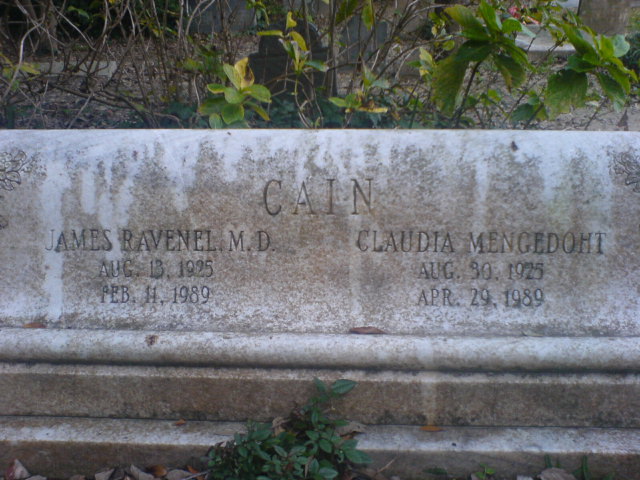The Gothic Period
 An Essay on Gothic Art
An Essay on Gothic Art
by
Varo Borja
In this essay I will attempt to not only relate to the reader the plan used by Abbot Suger in
relation to St. Denis, but I will also tell how this plan relates to the rest of Gothic architecture
and give a small amount of background on Abbot Suger and the time period in which he lived.
Abbot Suger, the man most responsible for the Gothic style as we know it, was born in 1081 AD in either Flanders, St. Denis, or near Beauce. According to the online encyclopedia Wikipedia, Abbot Suger entered the abbey at St. Denis in 1091 to become a member of the order that resided there. After spending time at St. Denis and some of the courts of the nobles of France, Suger went to Italy. To quote Wikipedia again “On his return from Italy, Suger became abbot of St Denis. Until 1127 he occupied himself at court mainly with the temporal affairs of the kingdom, while during the following decade he devoted himself to the reorganization and reform of St Denis. In 1137 he accompanied the future king, Louis VII, into Aquitaine on the occasion of that prince's marriage to Eleanor of Aquitaine, and during the second crusade served as one of the regents of the kingdom (1147 - 1149). He bitterly opposed the king's divorce, having himself advised the marriage. Although he disapproved of the second crusade, he himself, at the time of his death, had started preaching a new crusade.” Abbot Suger was a very influtential man, even something of a phenomenon. In the Middle Ages it was almost unheard of for the son of impoverished parents to reach the heights of political power and prestige that Abbot Suger attained. Abbot Suger was also a very learned man. He was a product of the monastic education system established by the Irish monks, who were renowned in much of Europe for the their high standards of scholarship and progressive methods of intstruction. To quote Wikipedia again, “Suger became the foremost historian of his time. He wrote a panegyric on Louis VI (Vita Ludovici regis), and collaborated in writing the perhaps more impartial history of Louis VII (Historia gloriosi regis Ludovici). In his Liber de rebus in administratione sua gestis, and its supplement Libellus de consecratione ecclesiae S. Dionysii, he treats of the improvements he had made to St Denis, describes the treasure of the church, and gives an account of the rebuilding. Suger's works served to imbue the monks of St Denis with a taste for history, and called forth a long series of quasi-official chronicles.”
To define the very spirit of Gothic achitecture, as exhibited by Abbot Suger’s work on St. Denis, is quite an imposing task. In my humble opinion, Gothic architecture embodies the very spirit of the mid to late middle ages, which is one of complete devotion to an unseen God and a persistent longing to bring that God’s kingdom to a world filled with war, disease, and ever lingering famine. Abbot Suger sought, through the texts of the ancients (particularly Dionysus the Areopagite) to bring man as close to God as is possible on earth, and to glorify that God’s earthly kingdom (as embodied in the kingdom of France, and then the rest of Christendom respectfully) with the elements that were at his (Suger’s) disposal. These elements were taken primarily from Romanesque architecture (the ribbed groin vault, the pointed arch, and the buttressed vault), but with a new luminosity that wasn’t possible before. This last element was provided through the use of stained glass. There was also a return to near-Classicism in this period in the field of sculpture. Huge strides were made towards achieving classical contrapposto and the truly organic aesthetic that had disappeared since the time of Imperial Rome.
Abbot Suger’s ideas were not new. He only expanded and for lack of a better word, “illuminated” the tried and true elements of the art and architecture of the past. His revolutionary style soon spread through all of Christendom, but it took different forms in each region of the Western world. In France, where the Gothic style originated, a couple of good examples of Suger’s influence can be seen at Chartres cathedral and the cathedral at Notre Dame. To quote the most excellent scholar, Henri Focillon from his Art of the West, Vol 2., “Lying on the fringes of Beauce, on the sharp descent down from the plateau, Chartres is both a town of the plains, ringed round with a wide horizon of cornfields, and a town of the uplands, where the roofs climb up steep slopes and along alleyways flanked by gables. To the east, the land on which the church stands is intersected by a fault, so that the apse dominates the void; westwards, the plateau falls gently away. The cathedral, like a fortress, overlooks and controls the town.” Chartres cathedral was built almost exclusively on the new pattern set by Suger at St. Denis. Chartres has the light, elegant feel of the Gothic style cathedral while retaining, like St. Denis, many of the elements found in Norman Romanesque and cathedrals such as Durham, in England. Chartres has a pair of assymetrical spires (also a new innovation of the Gothic period) at the west façade, and a richly decorated tympanum at the north portal. Again we see elements of the Romanesque period, but with a new freshness and a focus more on uplifting the worshipper instead of scaring the bejesus out of him. Another element found at Chartres that was begun during the Gothic period is the very ornate rose window found on the north façade. The interior of Chartres is lit by an amazing array of stained glass windows (180 in all) that are still intact to this day. Once again we see Abbot Suger’s hand at work in the luminescent effect of the jewelike window scheme.
At Notre Dame we see many of the same elements as at Chartres, again with much reliance on the old Norman Romanesque style and a hint of the German (in its squareness) flavor found at Speyer Cathdedral.. The double ambulatory of the choir continues directly into the aisles, and the shortened transept barely surpasses the width of the façade. The six-part nave vaults over squarish bays, although not identical with the “siamese twin” groin vaulting in Durham cathedral, continue the kind of structural experimentation that was begun by the Norman Romanesque. Much like St. Denis, the buttresses of Notre Dame cannot be seen from the inside, and the famous west façade contains a lovely rose window to, as according to Suger’s plan, illuminate the interior and enlighten the minds of the believers To quote M. Focillon once more, “The blind courses of inert stone are replaced by a skeletal armature which, within a net made up of radii, circles, and the arcades festooned around the circumference, entraps mulitcolored light. The wall has fallen, and revealed a wheel of fire.” (Art of the West, vol. 2 pgs. 42-43)
In England, at Salisbury cathedral we see a marked departure from Suger’s St. Denis in the exterior, which is low and sprawling much like an English bulldog. The layout of Salisbury is more Romanesque and Cistercian (a monastic order that was very austere and favored a more Spartan approach to the building of their churches) with a double transept and a square apse. Salisbury has a very large crossing tower (much larger than originally intended) found above the larger transept, that resembles the one found at Notre Dame. Upon entering the west portal the resemblance to Chartres is starkly evident in the large quantities of brightly lit stained glass to be found throughout the cathedral. Although differing largely from what Suger originally intended, Salisbury cathedral retains much of his original formula, just on a different framework.
Perhaps the biggest departure from Suger’s plan is to be found in Italy at Florence Cathedral. Here not much is left of the soaring majesty and ethereal grace of such cathedrals as Chartres and Notre Dame. Florence cathedral is based largely on the old Roman basilica plan, and like almost all Italian cathedrals, it features a campanile (bell tower) instead of a richly decorated and spire-laden westwork. The similarities are to be found in the details, though, such as the pointed arches and the stained glass of the campanile and the ribbed groin vault of the nave. Florence cathedral also contains a rounded apse at the eastern end, much like St. Denis and Notre Dame. Florence cathedral is definitely more sombre and archaic than St. Denis (Florence cathedral’s main feature is a huge octagonal dome, much like the Roman Pantheon), and it resembles an early Christian basilica more closely than the cathedrals of the Ile-de-France, but in the details of this relic of the past much of the Gothic spirit is to be found. One interesting aspect of Florence cathedral is that, in a way, it hearkened the end of the Gothic period and was the product of a new set of ideas and ideals fostered from much earlier time, but which would shine a new light on the world in the embodiment of the Italian Renaissance.
In conclusion, I would like to say that I much prefer the Gothic period over any that I have encountered, in regards to architecture. In cathedrals such as Chartres and Salisbury and even Florence, I find an absolutely exquisite beauty not to be found in our ultra-modern and plastic coated present world. Abbot Suger, through his study of the Dionysian mysteries, planted the seed for some of the most elegant buildings of all time, and we in the present age owe him an extreme debt of gratitude. Truly, these buildings were more than a mixture of glass, stone, and metal. They were imbued with the spirit of an age, and were certainly worthy resting places for the veneration of the unseen and inspiring hand of God.
Bibliography
Wikipedia: Found at: http://en.wikipedia.org/wiki/Abbot_Suger
Focillon, Henri. The Art of the West (vol. 2). Phaidon Press Ltd.: London and New York, 1963.



No comments:
Post a Comment